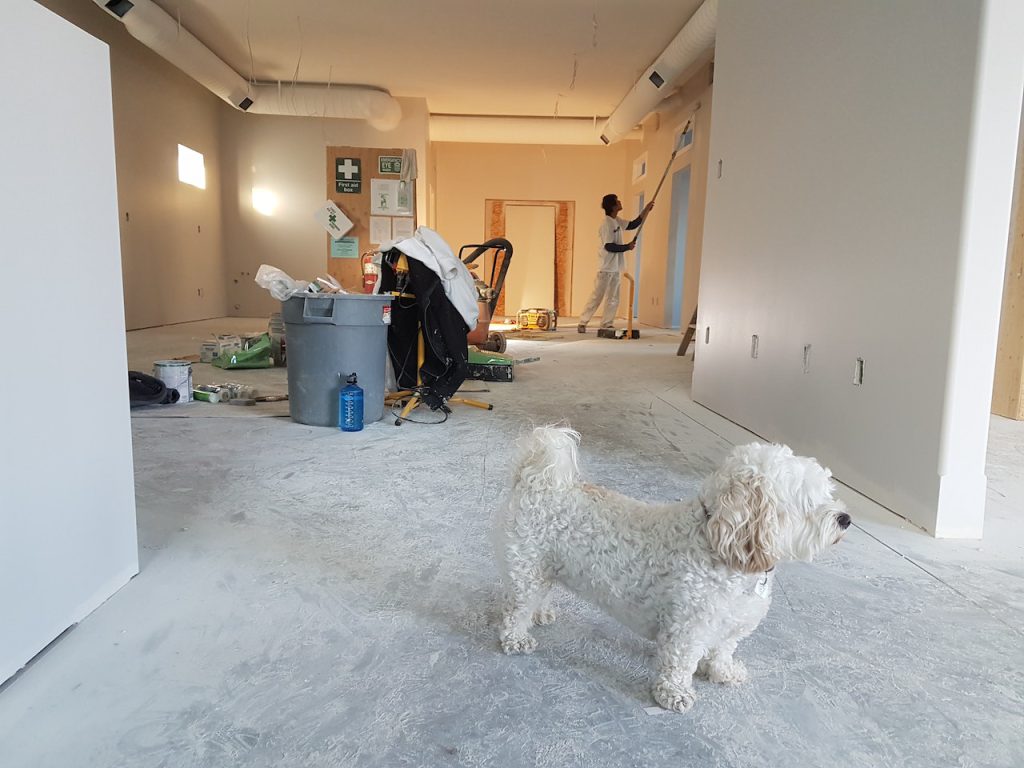Dream of a home where musty odors, unsightly stains, and moisture problems are non-existent? Say goodbye to the relentless battle against mold growth. Embracing a mold-free living environment is not just about aesthetics; it’s about safeguarding your health and well-being and indoor environments. From preventing respiratory issues to preserving the structural integrity of your property and indoor environments, the benefits are undeniable.
Imagine breathing in fresh, clean air while reveling in a space free from the clutches of mold. Get ready to discover why embracing a proactive approach to mold eradication in the home environment can revolutionize your living experience.
Table of Contents
ToggleUnderstanding Mold And Its Common Habitats
What Is Mold?
Mold is a type of fungus species that thrives in damp, humid environments. It reproduces by releasing tiny spores into the air, which can land on surfaces and begin to grow under suitable conditions.
Mold, species, can come in various colors, including black, green, orange, or white. It often has a musty odor and can cause discoloration on surfaces where it grows.
Common Habitats For Mold
Common habitats for mold include bathrooms, basements, kitchens, and any areas with water leaks or high humidity levels. Bathrooms are particularly prone to mold growth due to the presence of moisture from showers and baths.
Mold can also grow on organic materials such as wood (in attics or around windows), paper (books or cardboard boxes stored in damp areas), fabric (clothing left in humid spaces), and even food items if not properly stored.
Mold requires three main elements to thrive: moisture, warmth, and organic matter. Therefore, any situation where these conditions are present creates an ideal environment for mold growth.
Health Implications Of Mold Exposure
Respiratory Issues
Exposure to mold species can lead to various health problems, particularly affecting the respiratory system. When individuals are exposed to mold, they may experience symptoms such as coughing and wheezing. These respiratory issues can be quite uncomfortable and may impact an individual’s ability to breathe properly.
Mold exposure is especially concerning for those who already have existing respiratory conditions, such as asthma. For people with asthma, prolonged exposure to mold and rh can exacerbate their symptoms and make it harder for them to manage their condition effectively. This worsening of symptoms can lead to increased medication use and visits to healthcare providers.
Allergic Reactions And Mycotoxins
In addition to causing respiratory problems, mold exposure can also trigger allergic reactions in some individuals. When someone comes into contact with mold spores, their immune system may react negatively, leading to symptoms like sneezing, runny nose, red eyes, or skin rash. These allergic reactions can significantly affect a person’s quality of life and overall well-being.
Moreover, certain types of molds produce harmful substances called mycotoxins. When these mycotoxins are inhaled or ingested by humans, mold density can cause serious health effects. Symptoms of mycotoxin exposure include fatigue, headaches, nausea, and even more severe long-term health issues if the exposure continues over time.
Economic Benefits Of Preventing Mold Growth
Cost Savings
Preventing mold growth can save homeowners a significant amount of money on costly remediation efforts. When mold takes hold in a home, it can be challenging and expensive to remove. By actively preventing mold growth, individuals can avoid the financial burden associated with extensive mold removal processes. Instead of spending thousands of dollars on professional remediation services, investing in proactive measures to prevent mold growth is a much more cost-effective approach.
By keeping homes free from mold growth, individuals can also avoid potential medical expenses related to health issues caused by exposure to mold. This not only saves money but also contributes to maintaining overall well-being.
Structural Integrity Preservation
Maintaining a mold-free environment helps preserve the structural integrity of buildings. When left unchecked, mold can cause damage to various building materials such as wood, drywall, and insulation. Over time, this damage weakens the structure and may lead to costly repairs or even complete reconstruction.
By preventing mold growth, homeowners ensure that their properties remain structurally sound for an extended period without requiring major renovation work due to mold-related deterioration. This preservation not only saves money but also ensures the safety and longevity of the living space.
Property Value Maintenance
Property values are better maintained in homes that are free from mold damage. Potential buyers often consider the presence of any past or current issues with mold growth when evaluating a property’s value. A home with a history of mold problems may have its value reduced significantly compared to similar properties without such issues.
On the other hand, maintaining a property’s status as being consistently free from mold growth enhances its appeal in real estate markets and protects its value over time. This means that homeowners who take proactive steps toward preventing mold growth are effectively safeguarding their investment by ensuring that their property retains its market value.
Enhancing Indoor Air Quality Through Mold Control
Reduced Airborne Allergens
Controlling mold growth is essential for maintaining a healthy indoor environment. By preventing mold from proliferating, you can significantly reduce the mold density in the air, consequently minimizing airborne allergens. This is particularly beneficial for individuals with respiratory conditions such as asthma and allergies. When mold spores are present in the air, they can exacerbate these health issues.
Indoor environments that are prone to moisture accumulation, such as bathrooms and basements, can become breeding grounds for mold if not properly maintained. Proper ventilation and regular cleaning play a crucial role in reducing the presence of airborne allergens by limiting the spread of mold spores indoors.
Improved Ventilation And Filtration
Adequate ventilation and efficient air filtration systems are key components of an effective strategy to prevent mold growth. By ensuring proper airflow throughout your home or building, you can minimize the potential for moisture buildup on various surfaces like walls, carpets, or organic matter.
In addition to promoting better indoor air quality, well-maintained ventilation systems help prevent condensation on metal surfaces or adjacent rooms where temperature differentials may lead to excessive humidity levels. This proactive approach inhibits favorable conditions for hidden mold growth that could otherwise go undetected without thorough visual inspections.
Maintenance Routines For Better Indoor Air Quality
Regular cleaning and maintenance routines are fundamental in combating mold growth within indoor spaces. Ensuring that any water leaks or spills are promptly addressed helps eliminate opportunities for mold to thrive in damp areas. Moreover, keeping an eye out for signs of visible mold on surfaces like walls or ceilings allows homeowners and property managers to take swift action before it becomes a more extensive problem.
Mold Prevention Strategies For Homeowners
Regular Inspections And Prompt Leaks
Regularly inspecting plumbing fixtures and addressing leaks promptly is essential for mold prevention. Checking under sinks, around toilets, and behind appliances can help identify any leaks early on. Once identified, it’s important to address these issues immediately to prevent water accumulation that could lead to mold growth.
Using moisture-resistant materials in construction and renovation projects can deter mold growth. For example, using moisture-resistant drywall or greenboard in areas prone to high humidity such as bathrooms or basements can be a good idea. These materials are designed to withstand moisture better than traditional drywall, reducing the likelihood of mold development.
Proper Drainage Systems Implementation
Implementing proper drainage systems around the home helps prevent water accumulation. This measure involves ensuring that gutters are clear of debris so that rainwater flows freely away from the house. Grading the landscape away from the foundation can also help direct water away from the house rather than allowing it to pool near the structure.
The Role Of Humidity Control In Mold Prevention
Maintaining Indoor Humidity Levels
Indoor humidity levels play a crucial role in preventing mold growth. Keeping the indoor humidity below 60% is essential to inhibit mold from thriving. When the air inside our homes becomes too humid, it creates an ideal environment for mold spores to settle and multiply. By maintaining low humidity levels, we can effectively deter the growth of mold.
Dehumidifiers are powerful tools that help control moisture problems in damp areas within our homes. These devices work by extracting excess moisture from the air, thus reducing indoor humidity levels. For example, using a dehumidifier in basements or other areas prone to dampness can significantly decrease the risk of mold growth.
Proper ventilation is also critical for managing indoor humidity levels and preventing mold growth. Areas such as kitchens, bathrooms, and laundry rooms often generate significant amounts of steam and moisture during daily activities like cooking or showering. Without adequate ventilation, this moisture can become trapped indoors, leading to increased humidity levels and creating an environment conducive to mold development.
Effective Strategies For Controlling Humidity
Taking proactive measures to control indoor humidity not only prevents mold formation but also contributes to overall healthier living conditions. Utilizing exhaust fans in kitchens and bathrooms helps expel moist air outside rather than allowing it to linger indoors where it could promote mold growth.
Moreover, opening windows on dry days allows fresh air circulation throughout our homes which aids in reducing indoor humidity levels naturally without relying solely on mechanical systems like dehumidifiers. This simple yet effective strategy serves as a natural way of combating excessive indoor moisture while promoting better air quality inside our living spaces.
In addition to these strategies, using air conditioning units equipped with dehumidifying features further assists in regulating indoor humidity by removing excess moisture from the air when cooling our homes during hot weather periods.
- Dehumidifiers
- Proper ventilation
- Exhaust fans
- Opening windows
- Air conditioning units with dehumidifying features
Maintenance Tips For A Mold-Free Home Environment
Prompt Cleaning And Drying
Cleaning and drying wet areas promptly is crucial in preventing mold growth. When water accumulates, it creates the perfect environment for mold to thrive. For instance, after a shower, wipe down the walls and floor to remove excess moisture. Fix any leaks in pipes or appliances to prevent water from pooling.
It’s important to note that even small spills or leaks can lead to mold growth if not addressed quickly. For example, if you spill water on the carpet, make sure to thoroughly dry it within 24-48 hours to prevent mold from developing.
Regular HVAC System Maintenance
Regularly cleaning HVAC systems and replacing filters play a vital role in maintaining a mold-free home environment. By doing so, you minimize the circulation of mold spores throughout your home. It’s essential not only for preventing potential health issues but also for preserving indoor air quality.
By regularly changing filters every 1-3 months depending on usage and cleaning ducts annually, you reduce the risk of mold spores spreading through your home via the ventilation system.
Roof Gutter Inspection And Maintenance
Inspecting and maintaining roof gutters is another key aspect of ensuring a mold-free living space. Clogged gutters can cause water seepage into your home’s foundation or walls due to improper drainage. This excess moisture can create an ideal environment for mold growth.
Professional Mold Remediation And Prevention Services
Thorough Inspections
Certified mold inspectors are equipped to conduct thorough inspections, identifying hidden mold infestations in various areas of your home. These professionals have the expertise to detect mold growth in hard-to-reach places such as within walls, under floors, or even in the attic. By utilizing specialized techniques like surface sampling, they can pinpoint potential mold issues that may go unnoticed during routine cleaning or maintenance.
Not only do these inspections uncover existing cases of mold growth, but they also play a crucial role in preventing future problems. Identifying and addressing mold early on can prevent it from spreading further and causing more extensive damage to your property.
Professional Remediation Services
Professional remediation services offer an effective solution. Certified experts utilize specialized equipment designed for the safe and thorough removal of mold colonies. This ensures that the process is carried out efficiently while minimizing the risk of cross-contamination or exposure to harmful spores.
By enlisting professional help for mold remediation, you can effectively eliminate the source of the problem rather than just treating its visible symptoms. This approach not only provides immediate relief from mold-related issues but also helps safeguard against potential health risks associated with prolonged mold exposure.
Ongoing Preventive Maintenance Plans
In addition to addressing current mold issues, certified professionals offer ongoing preventive maintenance plans tailored to your specific needs. These plans are designed to protect homes against future occurrences by implementing proactive measures aimed at controlling moisture levels and preventing conditions conducive to mold growth.
From inspecting roofing systems for leaks that could lead to water intrusion, ensuring proper ventilation throughout the property, or providing guidance on maintaining optimal humidity levels indoors, these preventive maintenance plans cover a wide range of steps necessary for creating a mold-free living environment.
Long-Term Advantages Of A Mold-Resistant Lifestyle
Healthier Living Environment
A mold-resistant lifestyle contributes to creating a healthier living environment. By preventing mold growth, you can reduce the risk of respiratory issues and allergies for you and your family. Imagine being able to breathe in clean, fresh air without worrying about mold spores causing health problems.
Living in a space free from mold also means fewer sick days due to respiratory illnesses. You’ll be able to enjoy your home without the constant concern of potential health hazards lurking in hidden corners or behind walls.
Cost Savings Over Time
Embracing proactive measures for mold prevention leads to significant cost savings over time. With a reduced risk of property damage due to mold, you won’t have to worry about expensive repairs or replacement costs associated with structural damage caused by mold infestations.
By investing in preventive measures such as regular inspections and moisture control, you’re essentially safeguarding your property from the devastating effects of unchecked mold growth. This translates into long-term financial benefits, allowing you to allocate your hard-earned money towards other important aspects of life rather than costly remediation efforts.
Peace Of Mind For Homeowners
One key benefit that comes with adopting a mold-resistant lifestyle is the invaluable sense of security and peace of mind it offers homeowners. Instead of constantly fretting over potential mold issues, you can rest assured knowing that your home is protected against this pervasive threat.
Picture coming back home after a vacation or a long day at work with complete confidence that there are no hidden pockets of dampness waiting to turn into breeding grounds for harmful molds. It’s all about enjoying tranquility within the familiar walls while feeling confident that proactive steps have been taken to keep them free from harmful fungi.
In essence, committing yourself to a mold-resistant lifestyle not only ensures better health but also provides financial stability and emotional well-being through reduced risks and enhanced peace-of-mind opportunities.
Closing Thoughts
So, there you have it – the key benefits of preventing mold growth in your living space. From understanding the common habitats of mold to the long-term advantages of a mold-resistant lifestyle, you now grasp the importance of keeping mold at bay. It’s not just about maintaining a clean home; it’s about safeguarding your health, saving money, and creating a safe haven for you and your loved ones. Take action today to implement the mold prevention strategies and maintenance tips discussed here. Your future self will thank you for investing in a mold-free living environment.
Remember, a mold-free home is not just a dream; it’s an achievable reality with the right knowledge and proactive steps. Start small, but start now. Your efforts will pay off in spades, creating a healthier and happier living space for years to come.
Frequently Asked Questions
1. What Are The Common Habitats For Mold Growth?
Mold commonly thrives in damp, humid environments such as bathrooms, kitchens, basements, and areas with water leaks or poor ventilation.
2. How Does Mold Exposure Affect Health?
Mold exposure can lead to respiratory issues, allergies, skin irritation, and other health problems. It’s crucial to prevent mold growth to safeguard your well-being.
3. What Economic Benefits Come From Preventing Mold Growth?
Preventing mold growth helps avoid costly property damage repairs and reduces healthcare expenses associated with treating mold-related illnesses.
4. How Can Homeowners Enhance Indoor Air Quality Through Mold Control?
Homeowners can improve indoor air quality by promptly addressing any moisture issues, using dehumidifiers in damp areas, and ensuring proper ventilation throughout their homes.
5. What Role Does Humidity Control Play In Preventing Mold Growth?
Maintaining optimal humidity levels (ideally between 30-50%) is essential for thwarting the conditions that foster mold development within a home environment.
Sources:
Discover The Key To Mold Growth Prevention With Garcia Plumbing And Home Restoration!
At Garcia Plumbing and Home Restoration, we understand the challenges and health risks posed by mold growth in your home. Our team, renowned for their expertise in moisture control and mold prevention, is dedicated to creating a healthier, mold-free environment in your living spaces.
Our mission extends beyond simple repairs; we aim to enhance your home’s overall health and safety. With a strong reputation in Contra Costa County for quality service, deep knowledge of moisture and mold prevention, and a track record of satisfied clients, we stand as your first line of defense against mold. Don’t let mold compromise your home’s comfort and air quality. Reach out to us today for comprehensive solutions in mold growth prevention and experience the peace of mind that comes with a secure, mold-resistant home!




